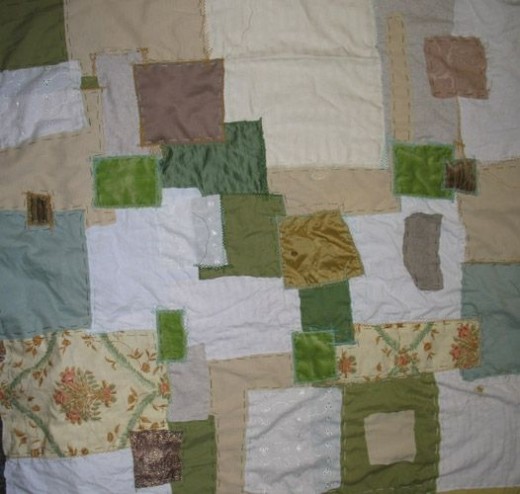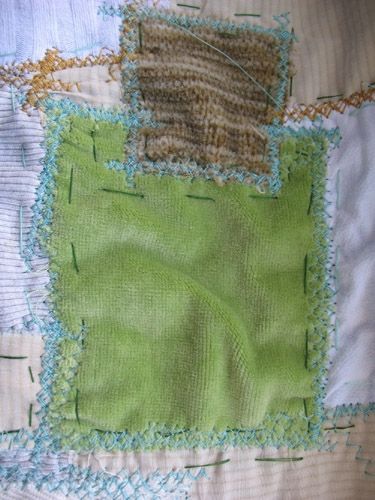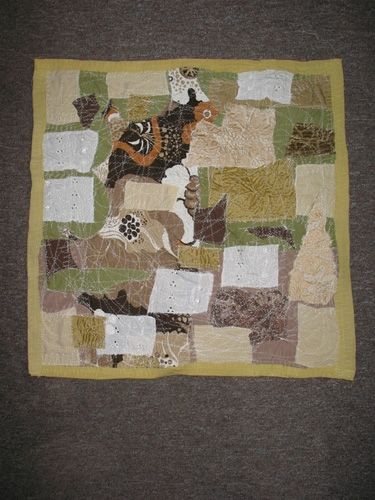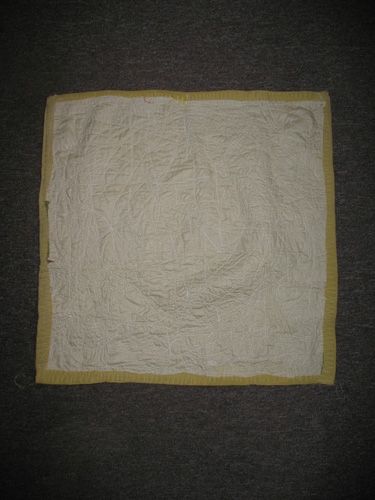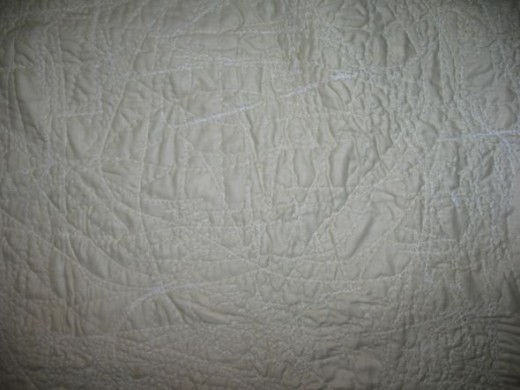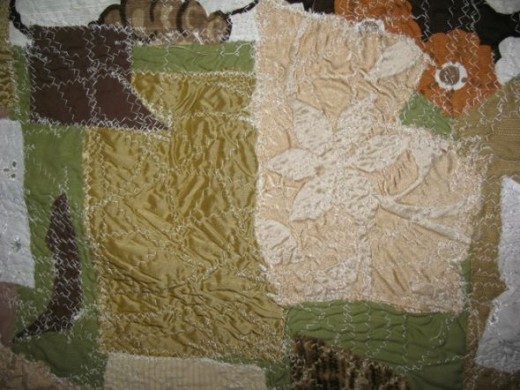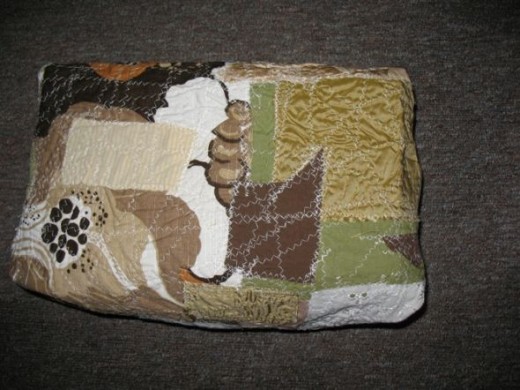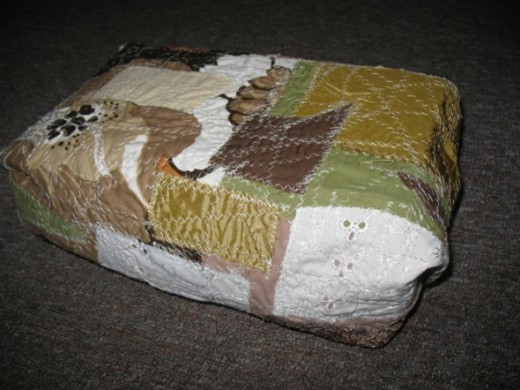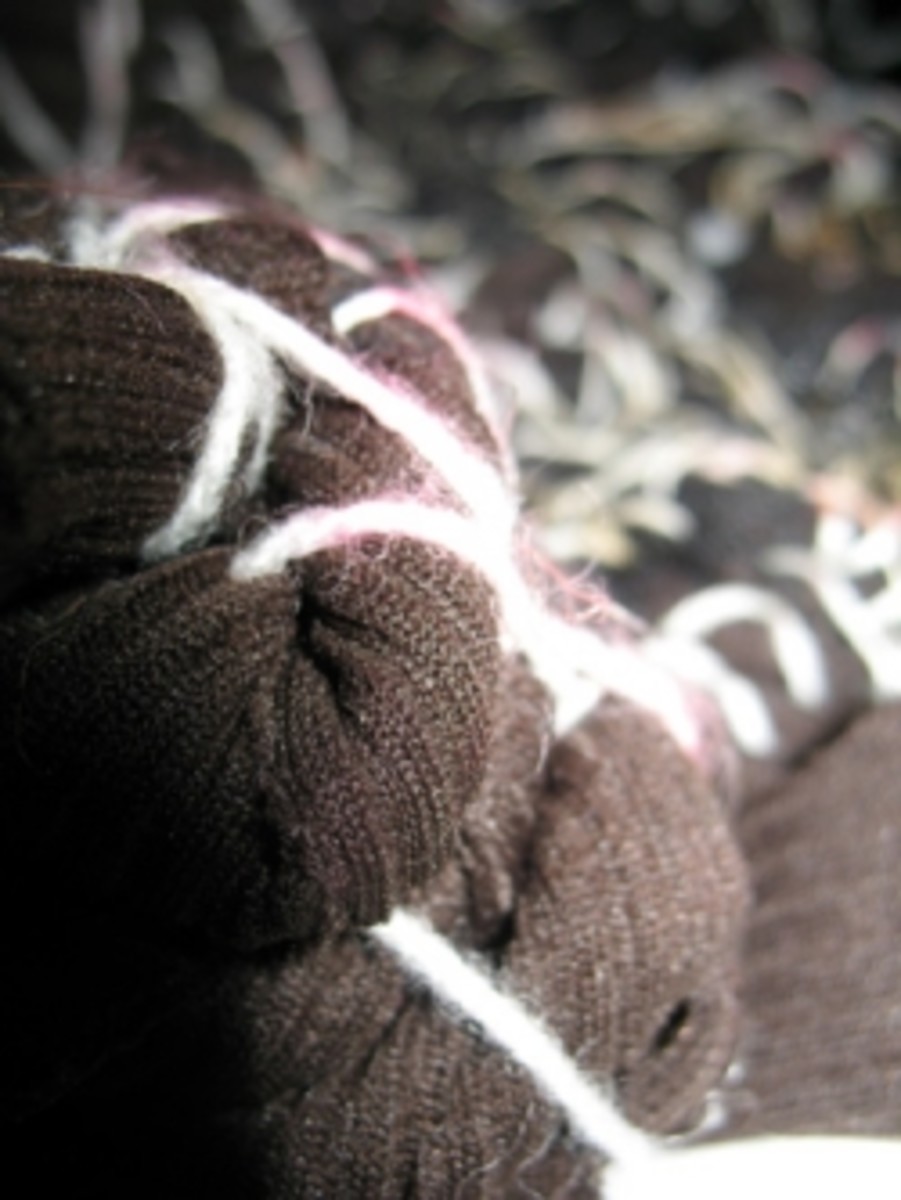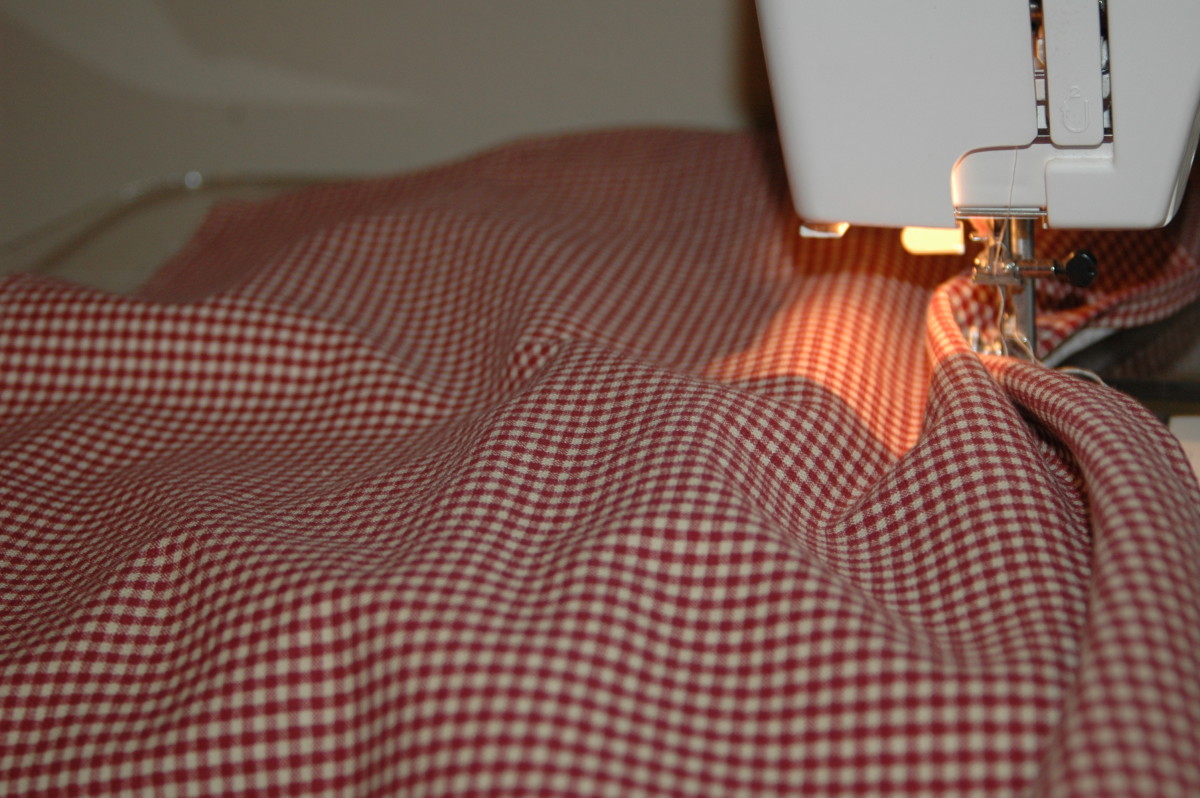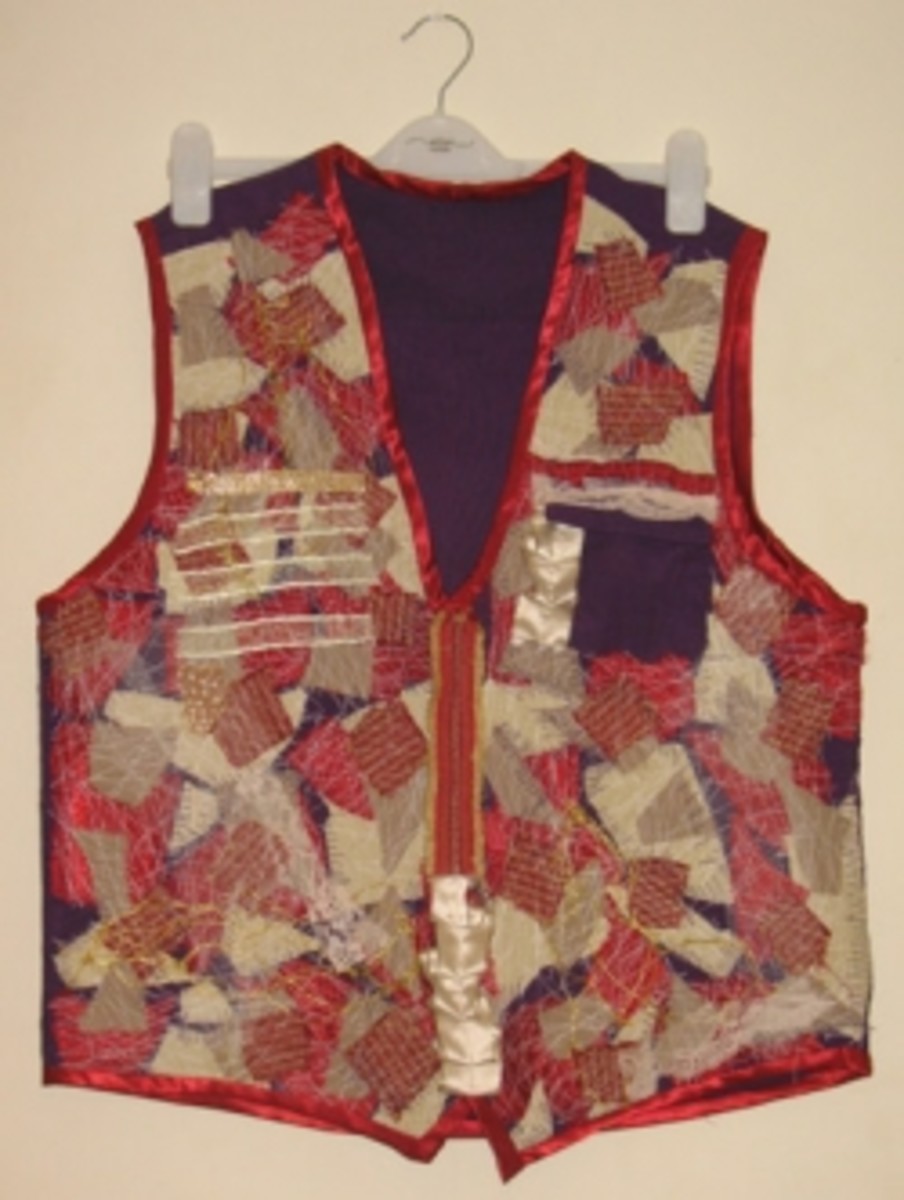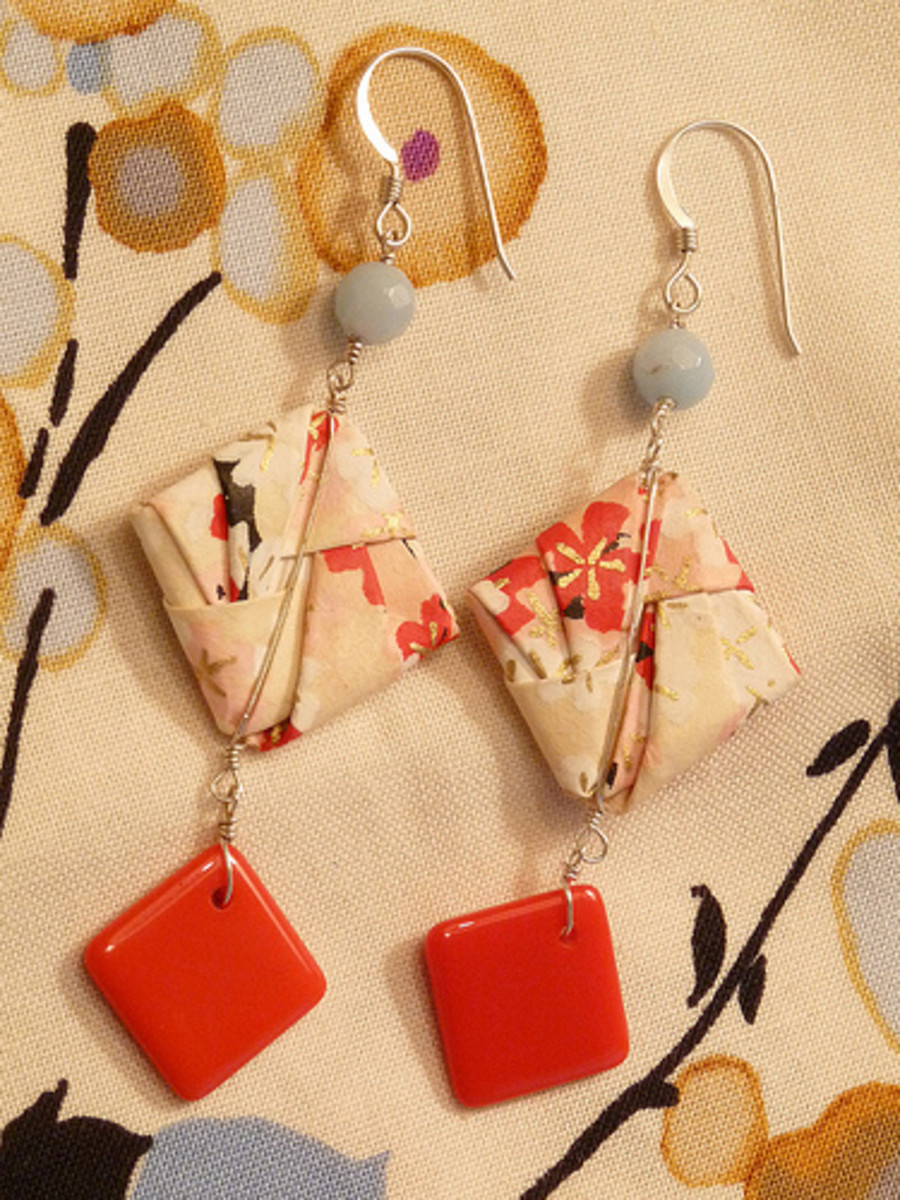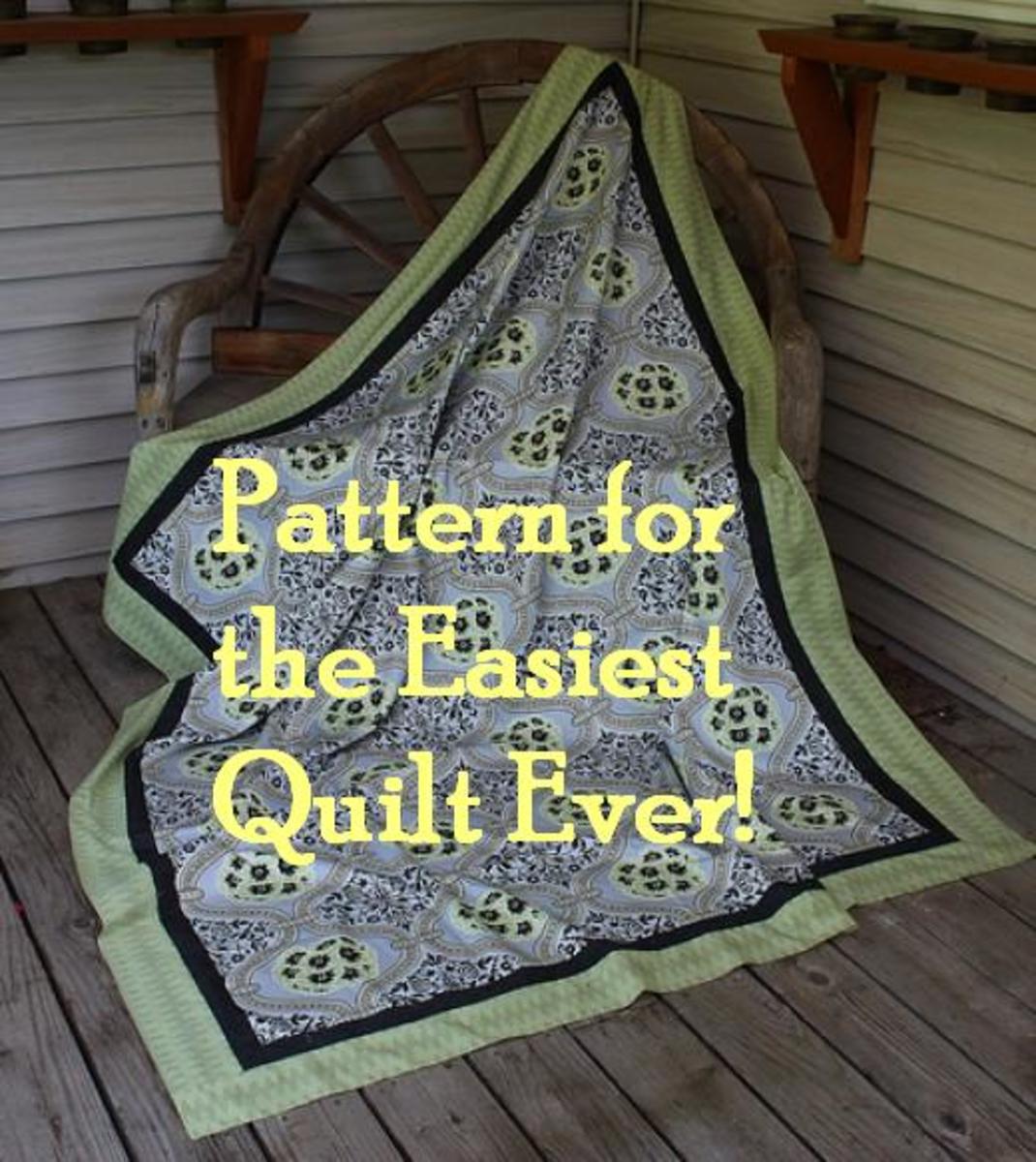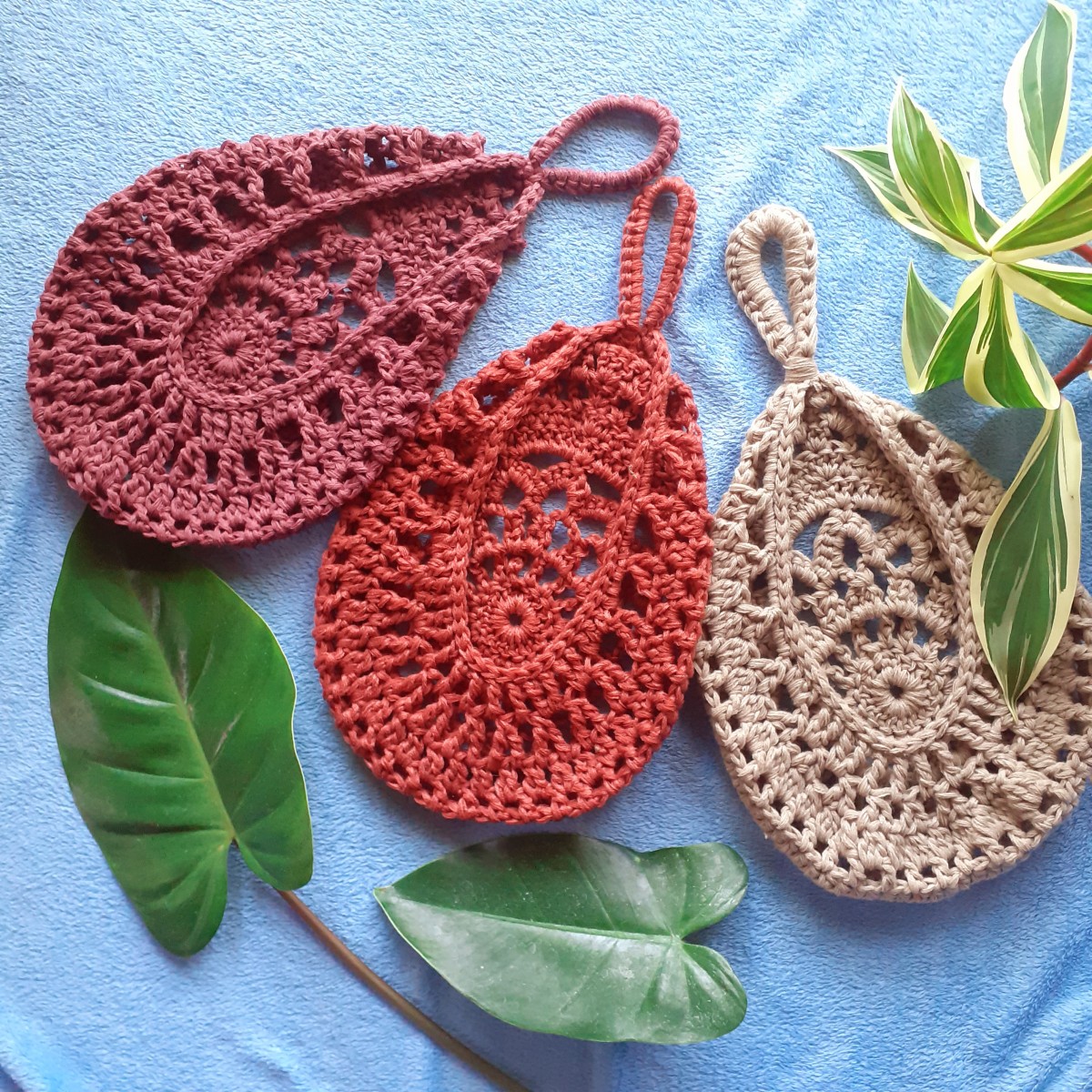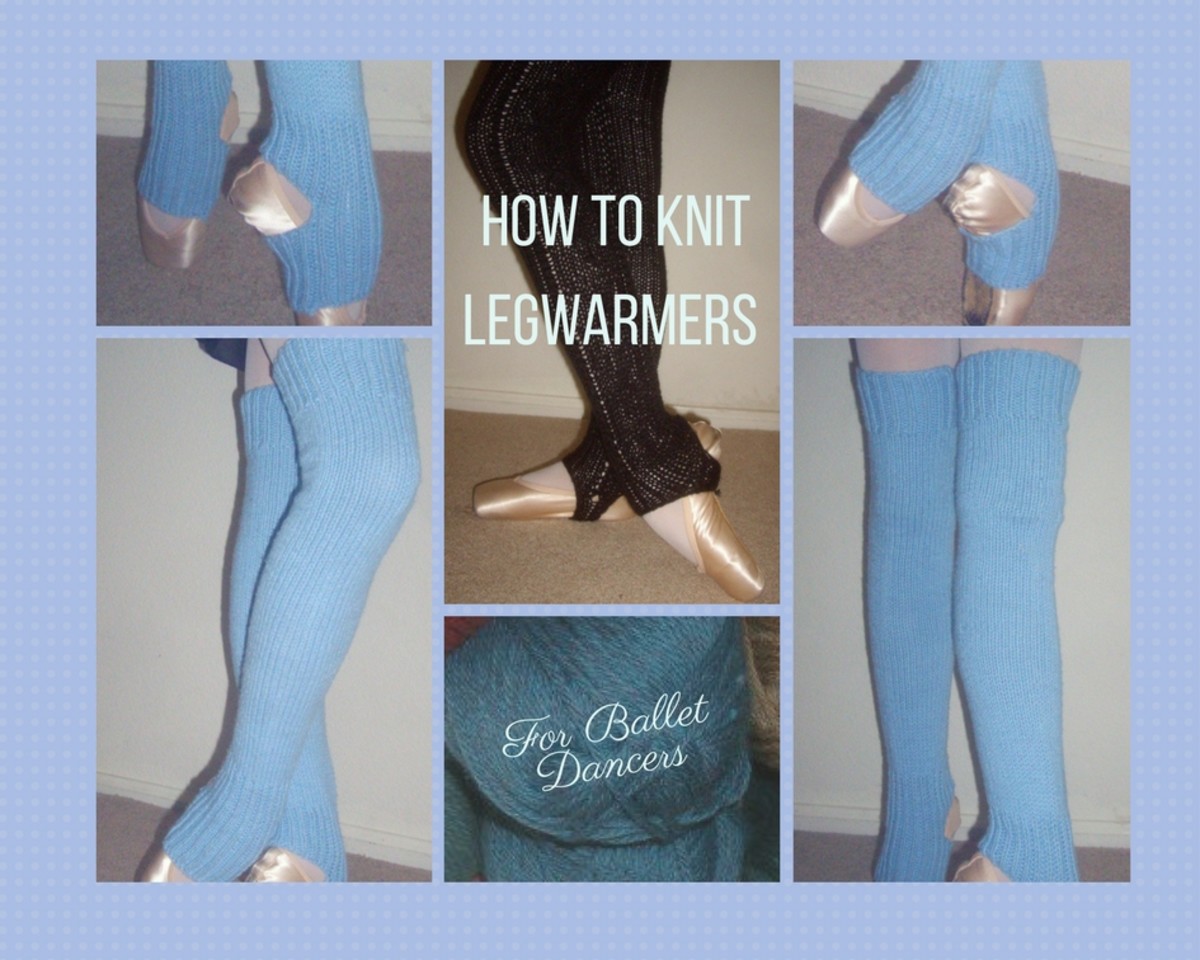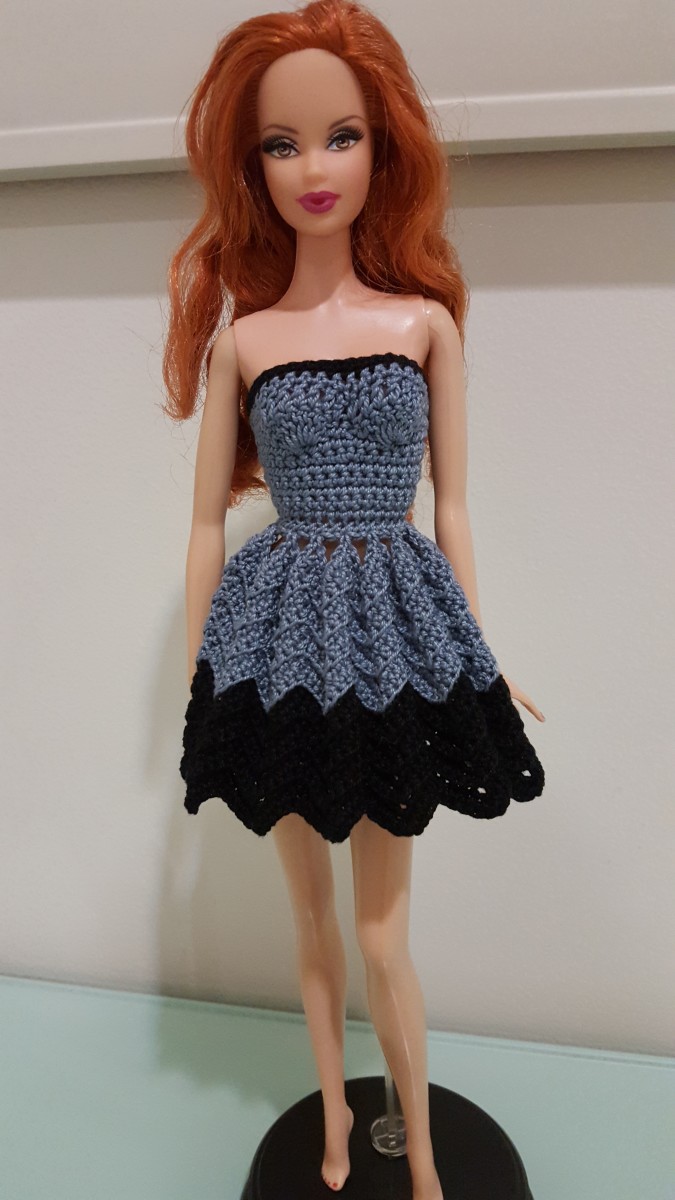Furoshiki - Ideas for Making Wrapping Cloths
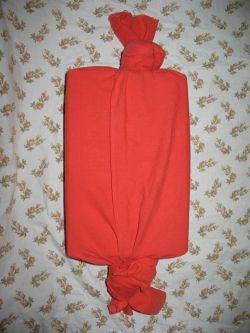
Fed up of using Wrapping Paper?
I know I'm fed up of wrapping gifts with expensive shiny paper that's just going to get chucked away and clog up some landfill site somewhere.
A while back I started wrapping gifts with pieces of fabric and using stitches instead of cellotape. Partly this was because I hate waste and partly it was due to the fact that I couldn't really afford to be wasting precious pennies on paper and I have boxes and boxes of fabric hanging around. However it wasn't like I could waste fabric either so I mainly used it on gifts for friends who craft too. That way they were getting an extra gift!
Recently I've discovered Furoshiki. These are Japanese cloths for wrapping gifts. The cloths can be given back to the gifter or used again for someone else's gifts.
I loved this idea and I loved the Furoshiki traditions so I decided I wanted to make some elaborate wrapping cloths of my own.
Below you will find the information and inspiration I've collected for making wrapping cloths.
What are Furoshiki?
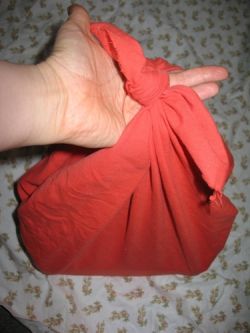
Furoshiki are traditional Japanese wrapping cloths and are used just like wrapping paper except you can do some really cool things with the fabric. Think origami but think of the advantages fabric has - it's not going to rip or tear and it can be easily folded, twisted, knotted and even fashioned into bags with handles.
Now, I don't know a huge amount about Furoshiki, that's why I've added a few links to other lenses further down the page, but there are some ideas I want to explore for making my own elaborate wrapping cloths.
I started using fabric to wrap gifts after seeing gifts and wares being protectively wrapped in films depicting "Ye Olden Times" and thought that using fabric was a great idea. Now I love the idea of using a "textiles piece" to wrap gifts.
Above: My first attempt at making a bag out of knotted fabric - your Furoshiki can be used to make a bag for gifts or the gift receiver can use it as a bag after they've opened their gift.

Above: I found a clever way to wrap two books with cloth - this could also work for DVDs.
I placed the cloth down diagonally, set the books at opposite corners, wrapped the triangular corners of the cloth over the books, wrapped the books towards the centre once more, brought the other two corners up through the middle of the books, pulled the corner tight, flipped the books around and then tied the two corners into a handle at the top.
Why Use Wrapping Cloths instead of Wrapping Paper?
It seems a lot of things that fabric was used for have been made into disposable paper products in the latter half of the last century - nappies/diapers for example, napkins, "feminie hygiene products", handkerchiefs and, yes, wrapping paper.
As we all know this has to change.
We have to start using reusable stuff again.
The environment aside, no one wants to look out of their windows and see trash everywhere.
I'm sure you've heard the stories, like I have, of landfills being completely covered in wrapping paper and discarded tinsel a few days after Christmas. And I'm sure like me you can remember filing a trash bag full of ripped paper.
What is wrong with us? Clearly we are all nuts!
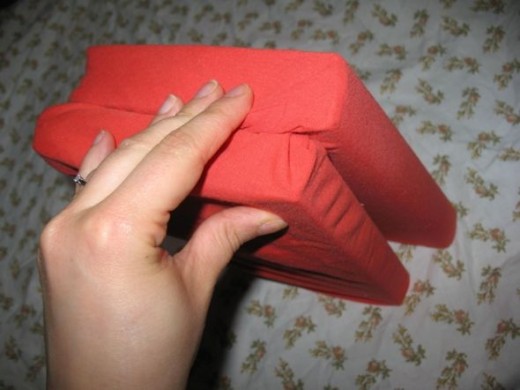
Above: This is what the bottom of the two wrapped books look like.
If you were wrapping smaller presents that were oddly shaped you could always find slimline boxes to put them in and wrap them in a similar way.
This Sounds Time-Consuming!
That's because it is going to be time-consuming!
It's so easy and convenient to go down to a store and buy some wrapping paper. Of course it is, that's why paper products are so widely available.
Sure, you will drive yourself mad if you make handmade decorated textiles cloths for everyone you know! And I bet like me that some people you know are just as likely to throw out fabric as they are paper!
What I'm suggesting is making one for a trial run.
I'm thinking it would be great to make wrapping cloths for either your partners or living-at-home children - that way you can keep an eye on your wrapping cloths and make sure they aren't thrown away and they're easy to retrieve for the next year.
If it's a success make more cloths the next year.
This could become a really cute tradition each Christmas - like hanging up stockings.
Once other friends and family members see what you're doing they might jump on board with the idea and be delighted when you use a wrapping cloth just for them.
Gift Wrapping with Textiles: Stylish Ideas from Japan

How Can I Make a Furoshiki Cloth?
Basically all you need is a large square of fabric.
Silk scarves can do the job nicely - as well as many other finer fabrics.
However, I want to use a piece of my textiles - and you may have noticed that my textiles pieces can be fairly thick. Unfortunately the thickness makes them hard to knot but they can still be used to wrap gifts.
Below I'd doodled some ideas about how gifts can be wrapped with thicker pieces of fabric.
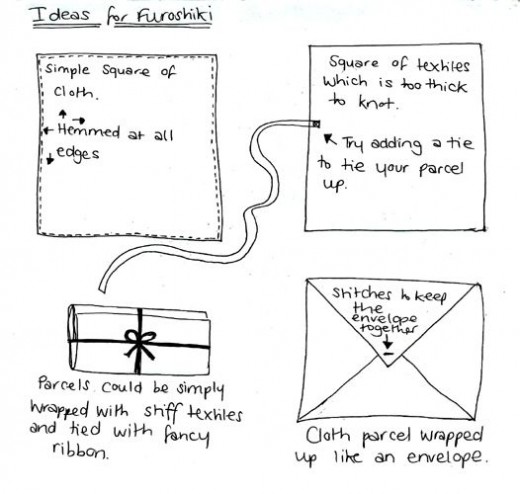
Above: A few ideas for how to wrap with your cloth.
Fabric envelopes might be a good way to go if you're in the habit of giving gift certificates.
With envelopes you know that the cards are always going to be within similar sizes. Envelopes can be made with all sorts of fabric and other materials - like plastics and you can make some great stiff shapes.
I'm not a big fan of giving cards at all for Christmas - but to be honest - what use is an envelope - just like wraping paper it's something that's going to get chucked - sometimes within minutes of you licking the flap down!
Fabric envelopes and postcards can also be sent through the post - as long as they've got a papery bit where you can securely stick a stamp.
Sizes
The red piece of fabric I used for my samples, in the images further up this page, was approximately 36" square - and it only just seemed big enough for wrapping two hardback books.
However the two Furoshiki that I found on amazon are 27" and 19" square.
I guess it depends on what you're wrapping and how thick your fabric is.
My red piece of fabric is from an old bed sheet so perhaps isn't as easy to wrap and knot as a piece of silk, for example.
I like the size of my red square so I think I'm going to stick with 36". Even if I can't knot it at the end (and I'm not really fussed about that) it'll still be big enough to wrap around most things and I can you stitches to hold the piece closed. When it comes to opening the gift the stitches can be carefully snipped - thus not ruining the cloth for the next gift to be wrapped.
Thickness
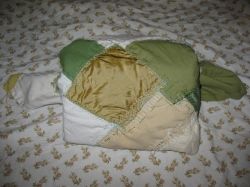
As already mentioned the thickness of your textiles piece is going to be a problem, I feel.
The thickness of the textiles piece you make is going to determine how well you will be able to manipulate it into different shapes.
As you can see from the images, trying to use one of my thick textiles pieces to wrap and knot gifts in fun ways isn't going to work! They're going to be tied or stitched instead.
Consider thickness before you start - do you want to use clever knots? If you do, you're going to need to think about using a single piece of fabric and decorating it in ways that aren't going to bulk it out - think embroidery, beading (although beads may catch on knots), dyeing and painting. I'm not going to get into dyeing and painting in this lens because It's something of which I know very little.
I'm going to be focusing on making a thicker wrapping cloth - it's more my style and also I love the protective quality that thicker, layered fabric could have - you don't want your gifts to get dented, afterall.
Above: There's too much fabric in the way to wrap these books properly!
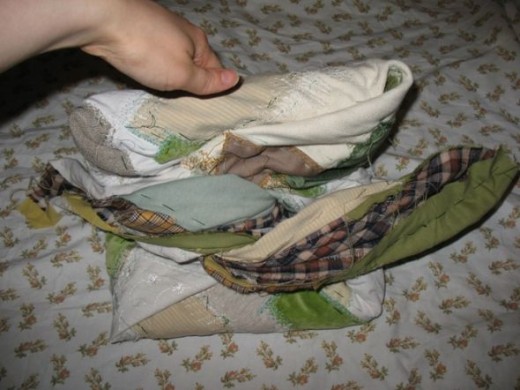
Above: My attempt at wrapping books Furoshiki style with layered patched textiles.
I think we can safely say it doesn't work!
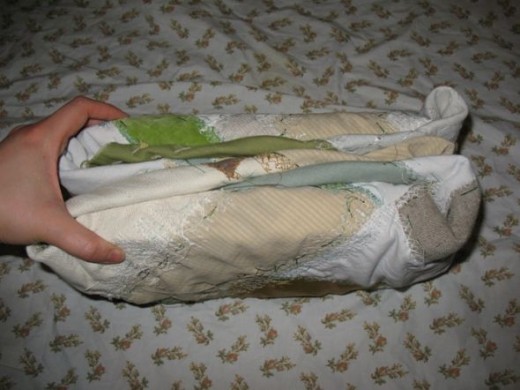
Above: Thicker textiles can be neatly folded and tied with string or stitched in place.
Patterns
Do you have any emblems or symbols that people specifically recognise as yours?
What about the people who are receiving the gift? For example - say you're making wrapping cloths for your family - what colours do they like? What imagery do they find appealing?
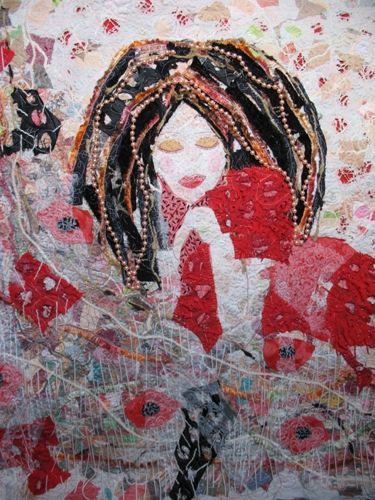
Above: I've used a lot of female figures in my textiles work in the past.
Something like this used on a cloth reminds me of the Furoshiki further up the page which features a Kabuki character.
What other images come to mind?
Perhaps your image could represent the holiday you're celebrating - for example - like Christmas wrapping paper if often covered in Christmas trees etc think about Nativity scenes.
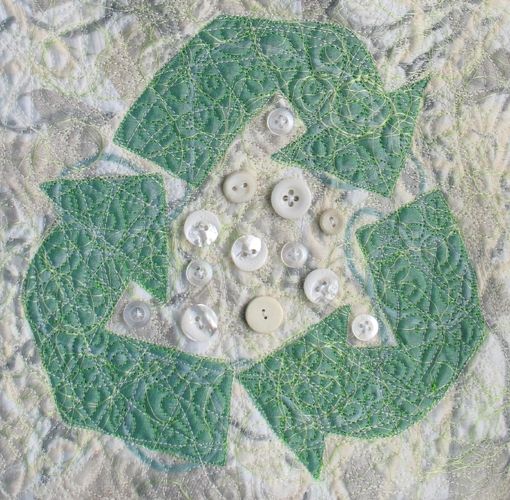
Above: Perhaps you want to give your gift receiver a little hint about what to do with the wrapping cloth!
Surface Decoration
There are no limits to what you can use for surface decoration - especially not if you're not worried about the thickness of your finished wrapping cloth.
At the time of writing this lens, I'm enjoying using patched fabric and decorating it with fabric yoyos. It's possible that I might use these techniques to make my wrapping cloths. The yoyos could take the place of bows and those other weird metallic things that people stick on wrapping paper.
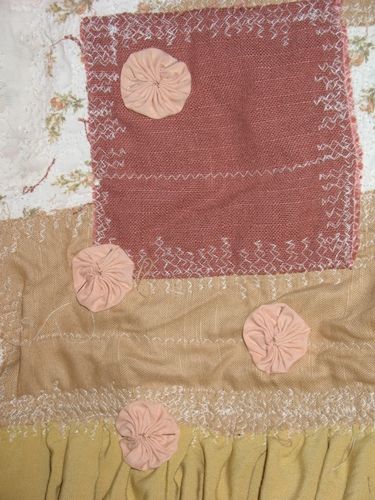
Above: Fabric yoyos pinned in place on patched textiles.
Below I've mentioned adding 3D elements like the donut-shaped beads pictured. These beads might get in the way of you wrapping your gifts - or consider how you could make 3D structures - vessels and boxes for gifts instead of just cloth.
I've seen Furoshiki used to wrap bottles and think the fabric beads below would be awesome for protecting the bottles if the package fell over.
There's all sorts of packaging that we use which could be replaced with reusable cloth.
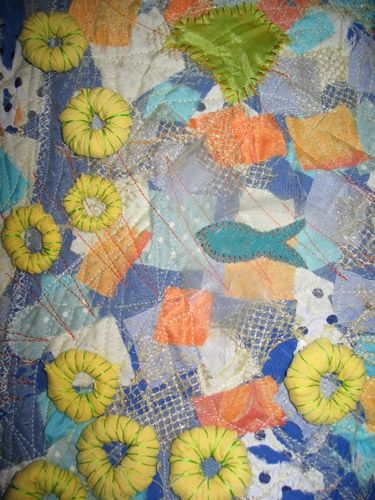
Above: Don't be afraid of adding a few 3D elements to your wrapping cloth - like these fabric beads.
They might get in the way or they might add a fun element!
I used the patched cloth below to wrap books in the "thickness" section above.
I love the idea of using patched cloth because not only are you making something reusable, but you've also got the option to patch together little pieces of fabric that can't be used for anything else.


Shibori Designs & Techniques
Shibori is a traditional Japanese dyeing technique that is also used to decorate Furoshiki.
Tie-dyeing comes from Shibori but there's so much more to this form of dyeing - so many beautiful shapes and patterns can be created. Visit google images to see some stunning examples.

Labels
Why Would You Want a Label?
Labels can be fashioned from fabric so that the receiver of your gift will know who it's from and who it's for (otherwise I foresee a very confusing Christmas time).
You could also make labels to give the receiver some information about your cloth and why you're using it instead of wrapping paper. This could be a great idea in getting other people on board with using cloth instead of paper - just don't be too overzealous in your explanation!
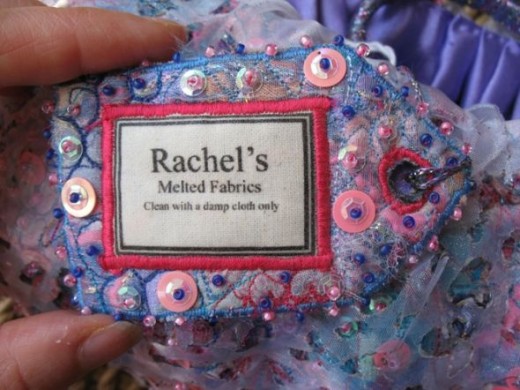
Above: I used to make these elaborate labels for all my bags.
This label was made from a fragment that had been cut from a textiles piece. I machine embroidered the textiles and stitched sequins and beads in place.
T-Shirt Transfer Paper

My Handmade Furoshiki Cloth
My furoshiki cloth was made by piecing together random patches on fabric on top of a plain square of cloth.
I zigzagged all the pieces together and then bound the edges with a separate piece of cloth.
The cloth can then be wrapped around gifts and secured into place with a few stitches.







